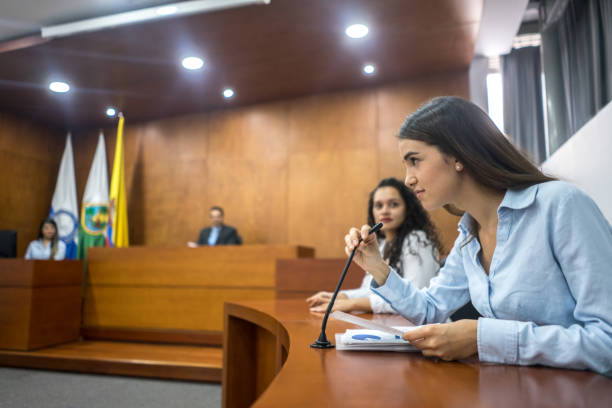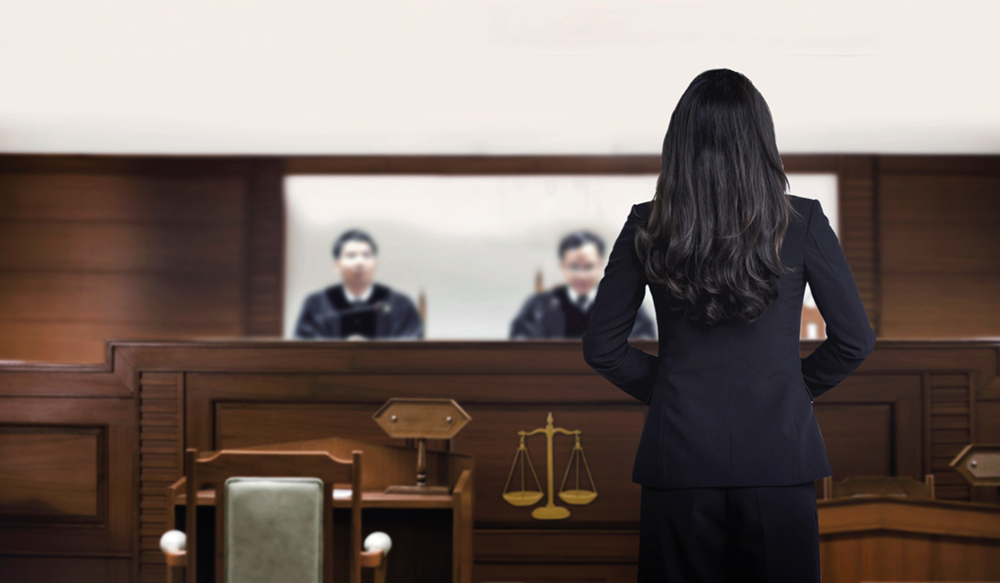From Idea to Court: Steps to Develop Effective and Persuading Trial Presentations
From Idea to Court: Steps to Develop Effective and Persuading Trial Presentations
Blog Article
Browsing the Intricacies of Test Presentations: Tips for Seamless Shipment and Engaging Debates
In the realm of legal process, the art of trial discussion stands as a vital determinant of success. The complexities fundamental in test presentations require a fragile equilibrium of method, skill, and skill.

Recognizing Test Objectives
To effectively browse a test, it is important to have a clear understanding of the goals that require to be accomplished. Before entering the courtroom, legal groups have to specify their goals and wanted end results. These purposes function as leading principles throughout the test, shaping strategies and influencing decision-making procedures.
Comprehending test purposes includes a detailed analysis of the case, legal precedents, and the customer's ideal passions. Trial Presentations. It requires a meticulous evaluation of the truths, identifying vital problems, and preparing for prospective obstacles. By setting particular and measurable goals, lawyers can tailor their arguments and discussions to line up with the wanted outcomes
Moreover, a clear grip of test purposes enables legal teams to prioritize evidence, witnesses, and lawful arguments effectively. It permits the growth of a meaningful narrative that resonates with the discretionary, strengthening the overall case presentation.

Organizing Proof Successfully
Having a clear understanding of test goals lays the foundation for arranging proof efficiently in legal process - Trial Presentations. By straightening the presentation of evidence with the wanted end results of the trial, legal groups can enhance their arguments and boost their persuasiveness. One critical element of organizing proof is classification. Grouping proof based on themes or importance to certain legal components can assist streamline the discussion and make complicated details a lot more digestible for the court or jury.
An additional crucial element in arranging proof efficiently is developing a rational circulation. Presenting proof in a consecutive and coherent fashion can help develop an engaging narrative that sustains the legal disagreements being made. In addition, using aesthetic help such as charts, timelines, or charts can additionally enhance the organization of proof and aid in clarifying complicated partnerships or sequences of events.
Moreover, making certain that all evidence provided is permissible and pertinent to the case is crucial. Unimportant or inadmissible proof can take away from the strength of the argument and possibly harm the integrity of the here and now party. For that reason, a careful testimonial and option procedure should be carried out to include only the most lawfully sound and impactful evidence in the trial presentation.
Crafting Influential Stories
Crafting compelling stories plays a critical duty in providing persuasive debates during legal process. When constructing a story for a test presentation, it is necessary This Site to develop a clear storyline that highlights key factors and links them in a meaningful manner. By weaving together proof, statement, and lawful arguments into a cohesive and persuasive story, legal specialists can successfully advocate for their clients and raise the chance of a positive end result in the courtroom.
Understanding Visual Aids
Reliable use visual help is vital to enhancing the effect and quality of trial presentations. Aesthetic help, when utilized tactically, have the power to streamline intricate information, strengthen vital factors, and leave a long lasting perception on the discretionary. To master visual aids in trial discussions, it is crucial to guarantee that they are clear, concise, and appropriate to the debates being made.
When including visual aids, such as charts, pictures, charts, or timelines, right into a test discussion, it is important to keep them visually appealing yet professional. The visuals ought to match the verbal arguments, offering a graph of the information being talked about without overwhelming the audience with unnecessary information.
Moreover, experimenting the aesthetic help in advance is imperative to ensure a smooth distribution throughout the test. Acquainting oneself with the web content, transitions, and timings of each visual aid can help keep the circulation of the discussion and stop technical glitches that may develop.
Delivering Impactful Closing Debates
An engaging closing disagreement serves as the end result of a trial presentation, encapsulating the core narrative and persuading the discretionary towards a favorable decision. To provide an impactful closing debate, it is critical to succinctly wrap up vital points, highlight the strengths of your instance, and attend to any type of weaknesses in a critical way. Begin by describing the major disagreements that support your customer's setting, stressing why the proof presented throughout the test supports your story. It is necessary to create a feeling of cohesion and quality, directing the court and jury in the direction of the desired verdict.
Moreover, integrating psychological appeal can additionally strengthen your closing disagreement. By humanizing the instance and connecting on a personal level with the decision-makers, you can stimulate compassion and understanding, influencing their understanding of the truths offered. Additionally, repeating the lawful criteria that must be satisfied for a desirable judgment can reinforce the validity of your setting. Inevitably, a well-crafted closing debate should leave a long lasting perception, engaging the court and court to regulation in your client's favor.
Final Thought
Finally, understanding test discussions entails recognizing purposes, arranging proof, article crafting stories, making use of aesthetic aids, and providing impactful closing disagreements. By carrying out these techniques effectively, legal representatives can present their instance flawlessly and make compelling disagreements in the court room. It is important to navigate the intricacies of test discussions with accuracy and ability to accomplish success in legal proceedings.
By aligning the presentation of evidence with the preferred results of the trial, legal teams can enhance their debates and enhance their persuasiveness (Trial Presentations). To understand aesthetic aids in trial presentations, it is critical to ensure that they are clear, succinct, and appropriate to the debates being made
A compelling closing argument offers as the conclusion of a trial discussion, encapsulating the core story and convincing the judge and jury towards a favorable choice. Begin by laying out the major debates that support your customer's placement, highlighting why the evidence provided throughout the trial sustains your you could check here narrative.In verdict, mastering test discussions entails understanding objectives, organizing evidence, crafting narratives, using aesthetic help, and delivering impactful closing debates.
Report this page